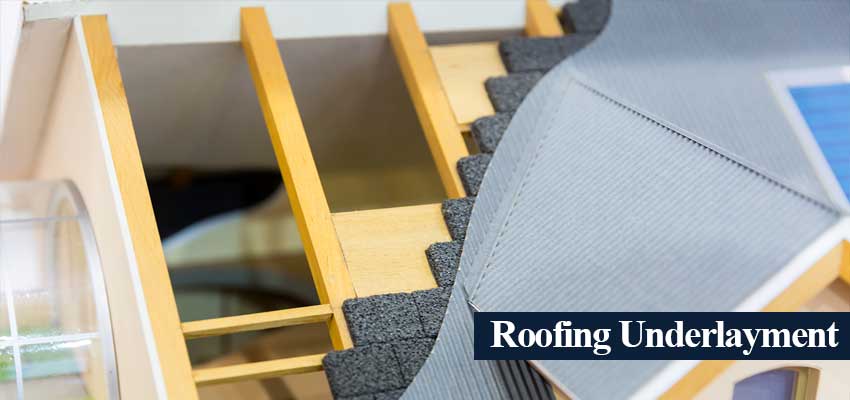Your roof does an important job, protecting your home and everything – and everyone – in it from the weather. It also protects your attic space so that it can provide sufficient ventilation and insulation through all seasons.
A durable, quality roof goes well beyond just the shingles. All good roofs must contain an underlayment, which adds another layer of protection so your home stays dry. Ask your roofing contractor in Quincy about the type of underlayment they use.
Roofing Underlayment: Defined
A roofing underlayment is basically a barrier material that is installed right on your roof deck, also known as roof sheathing. This may be comprised of plywood, step sheathing or OSB.
These boards, fastened onto the trusses or rafters, will help to stabilize them and provide a sturdy roof structure.
The roofing underlayment is placed on top of the sheathing material as a secondary layer of protection from water that could seep under your shingles.
Types of Roofing Underlayment
There are three main kinds of roofing underlayment, and they include felt, self-adhered, and synthetic. Each comes with its own advantages and drawbacks, and the one your home will get will depend on the preferences of your roofing contractor.
1 Felt Underlayment
Commonly known as tar paper or felt paper, this type is comprised of organic mat or paper that’s saturated with asphalt to aid in water resistance. There is a light version and a heavy duty version. The light version can tear easily if exposed to the elements, causing it to absorb water and wrinkle. That’s why many contractors go with the more durable felt version.
2 Self-Adhered Underlayment
This type is comprised of asphalt and rubber polymers to result in a water-resistant solution. Featuring a sticky back, this underlayment can easily adhere to the roof deck while creating a waterproof seal. It’s designed to protect your roof from leak-prone areas such as:
- Eaves
- Chimneys
- Valleys
- Vents
- Skylights
These underlayments are typically used in regions that experience severe winter weather.
3 Synthetic Underlayment
This type is comprised of many layers of polymers all woven together. They are popular among today’s homeowners because they:
- Are durable and tear-resistant
- Are lighter, featuring more coverage per roll, which reduces ladder trips
- Ensure a secure walking surface
- Have clear, distinct lines and overlap guides
- Can repel water and mold
Why You Need Roofing Underlayment
Your asphalt shingle roof is your home’s first line of defense, as it helps to reflect the sun’s rays, repel moisture, and withstand high winds.
However, you need an extra layer of protection in the form of a roofing underlayment to:
- Safeguard your roof if the shingles fall off during high winds
- Protect your roof deck from damage due to ice dams in winter
- Shield your roof from inclement weather during installation
- Comply with local building codes
- Meet warranty requirements from shingle manufacturers
Revered Roofing in Massachusetts
If you’re curious to know what type of underlayment your roofing contractor in Plymouth, Quincy, Hanover and the South Shore, MA will use, just ask! Get a free quote on roof installation when you contact us at 781-536-4589 today.
I'm extremely pleased with my new roof. Paul & his crew did a excellent job. Stayed within Quote, Roof & total clean up was completed in one day. I highly recommend Revered Metal Roofing!

